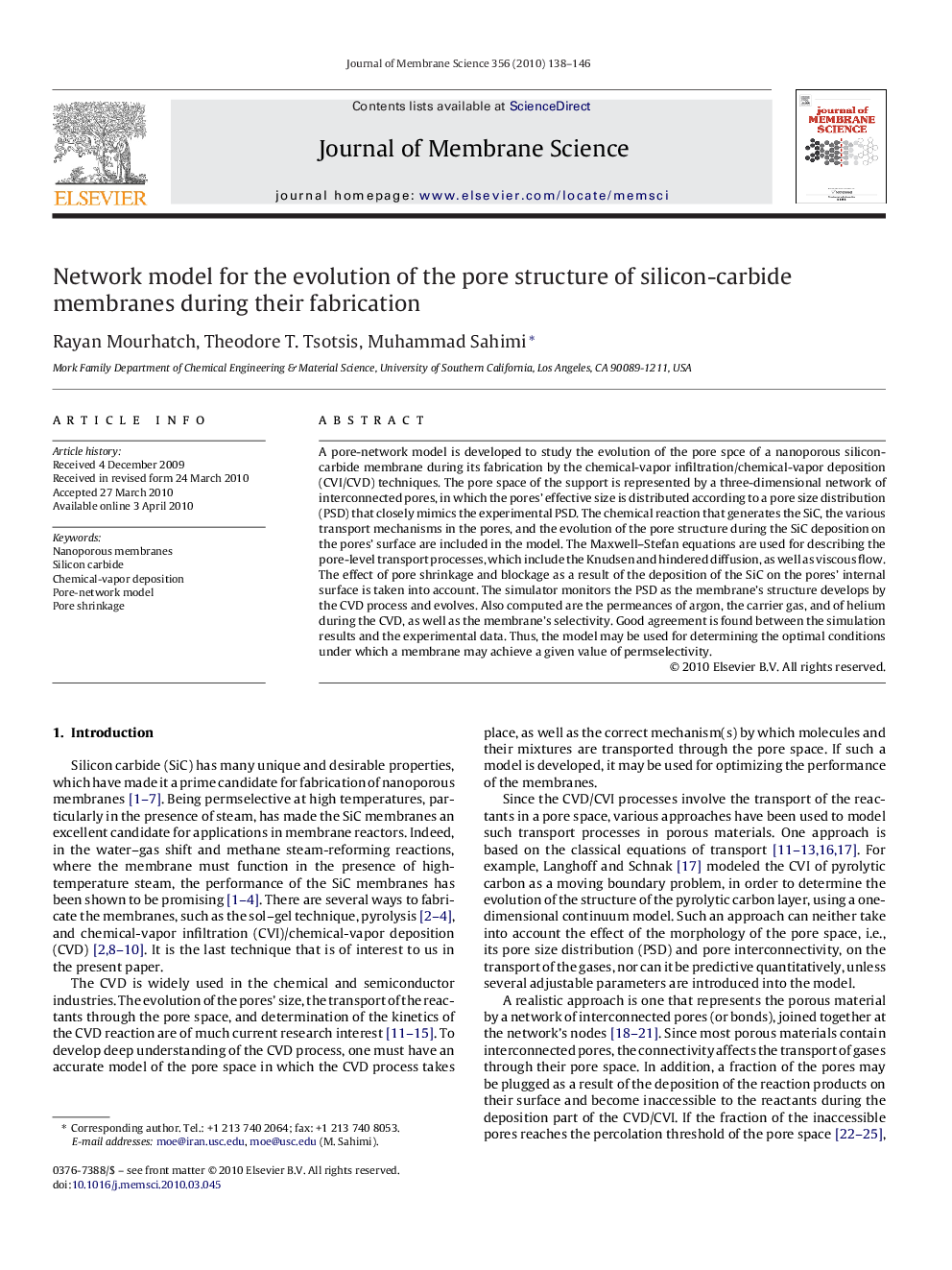| کد مقاله | کد نشریه | سال انتشار | مقاله انگلیسی | نسخه تمام متن |
|---|---|---|---|---|
| 636396 | 1456123 | 2010 | 9 صفحه PDF | دانلود رایگان |

A pore-network model is developed to study the evolution of the pore spce of a nanoporous silicon-carbide membrane during its fabrication by the chemical-vapor infiltration/chemical-vapor deposition (CVI/CVD) techniques. The pore space of the support is represented by a three-dimensional network of interconnected pores, in which the pores’ effective size is distributed according to a pore size distribution (PSD) that closely mimics the experimental PSD. The chemical reaction that generates the SiC, the various transport mechanisms in the pores, and the evolution of the pore structure during the SiC deposition on the pores’ surface are included in the model. The Maxwell–Stefan equations are used for describing the pore-level transport processes, which include the Knudsen and hindered diffusion, as well as viscous flow. The effect of pore shrinkage and blockage as a result of the deposition of the SiC on the pores’ internal surface is taken into account. The simulator monitors the PSD as the membrane's structure develops by the CVD process and evolves. Also computed are the permeances of argon, the carrier gas, and of helium during the CVD, as well as the membrane's selectivity. Good agreement is found between the simulation results and the experimental data. Thus, the model may be used for determining the optimal conditions under which a membrane may achieve a given value of permselectivity.
Journal: Journal of Membrane Science - Volume 356, Issues 1–2, 1 July 2010, Pages 138–146